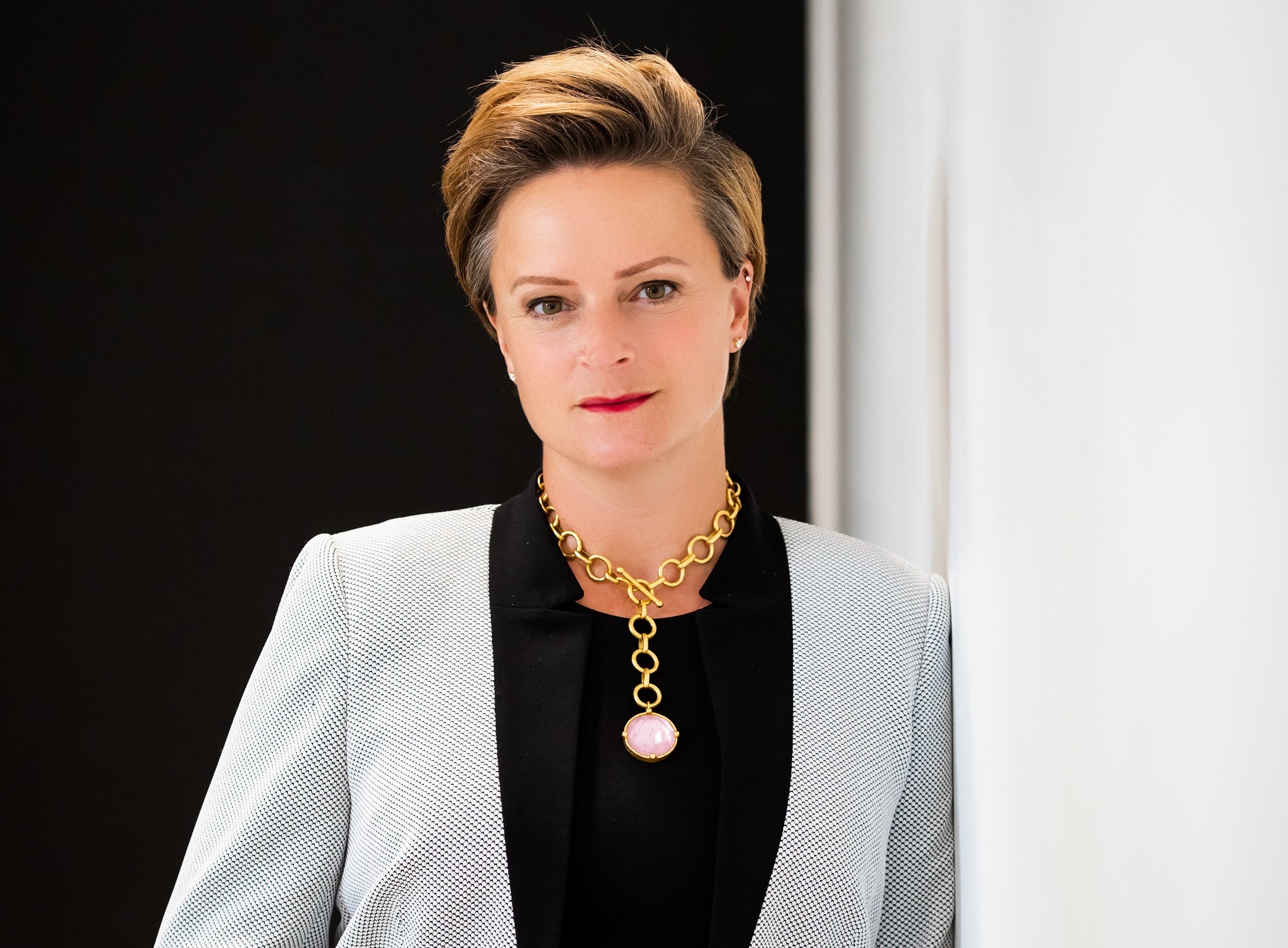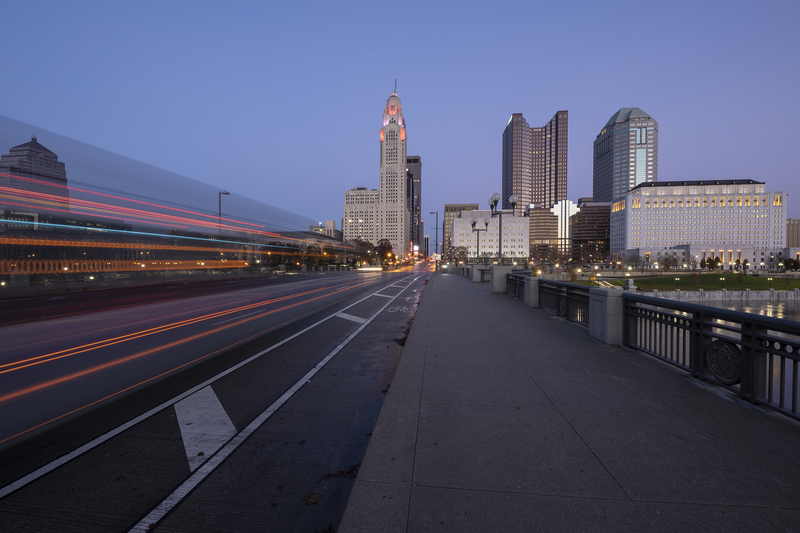
Joanna M. Pinkerton, president & CEO of Central Ohio Transit Authority (Cota) is clear about the power of mobility. “Mobility should be ubiquitous for people,” she begins. “People tend to take it for granted, it just exists. But when you do not have access to mobility, the ability to move across modes, you literally can't live - it impacts your life.”
Cota is the regional public transit provider for greater Columbus and Central Ohio, serving an area with more than 1.2 million residents and looking after 19 million trips per year.
Criticism of transportation in the US takes multiple forms but particular disquiet coalesces around car-centricity: for example, the interstate highway revolution of the 1950s helped drive economic success through connecting cities; but it also – the counter-argument goes - split urban communities, made suburban sprawl inevitable and was a key plank underpinning social inequality.
“We have a really good backbone with our transit, our highways and a lot of our infrastructure that was built based on previous generations’ models,” Pinkerton says. “And I try and remind people that our grandparents did a great job, right? There's some really good things they did. But it's just like a house: you wouldn't leave it like that; it has to be updated and remodelled for modern needs.”
"We have astounding – actually, atrocious - safety issues here in the US"
Safety is at the top of this list of needs. “You know, we have astounding – actually, atrocious - safety issues here in the US,” she adds. “We see where other countries, other continents, are seeing results with Vision Zero, but our Vision Zero seems to have kind of stagnated a little bit.”
When it comes to how infrastructure is utilised, Pinkerton says there must be an emphasis on climate sustainability, resiliency and equity. “So if it was a good system, who was it good for? Did we have generational impacts? And if we want really true social and economic prosperity, then what tools do people need? And it's pretty clear that there's a lot of gaps when it comes to transportation - making sure people have access to whatever it is they need. The number one issue that everyone's talking about right now is workers. Well, how much of that is an issue that's been caused by the fact that people don't think transportation and housing and jobs and the way to get there doesn't match up?”

To illustrate her point, Pinkerton says she was recently appointed to the board of engineering where she went to college. “We're looking at the curricula holistically, so I gave the dean of engineering a perspective: roughly 25-30 years ago, I knew perfectly how to make sure the bridge didn't fall down, the pavement would last a long time, all of these things that were really necessary to preserve life,” she explains.
“If we want really true social and economic prosperity, then what tools do people need?”
“But it really prioritised speed, cars, numbers - it did not look at outcomes. I never once heard about redlining in my curricula and the fact that maybe the alignment of that highway, even though people can go through faster, it did not take into consideration: do the people in this neighbourhood have access to jobs? Looking at things more holistically, based on outcomes, is really important. It's not that what got built before was bad because it did lead to certain things - but it also has some really serious impacts when it comes to making sure certain people were included.”
So how do we bring more people in? “I've been in engineering and tech R&D my entire career,” Pinkerton says. “And the part I've enjoyed the most is the collaboration of getting even early-stage R&D into the client space, and then taking that into operations and helping people understand how to translate it to what matters.”
Equity in action
One of the issues that matters is equity. Parity.org, which works to eliminate the racial and gender gap in corporate leadership, recently put Cota on its list of Best Companies for People of Colour to Advance, and also named it on the Best Companies for Women to Advance list for the fourth year in a row. Only 18 organisations are on both lists, with Cota joining Nasdaq, PepsiCo, Ralph Lauren and Reddit among a select band.
Under Pinkerton’s leadership, 65% of Cota’s employees are Black, while women make up more than 35% of the workforce. Added to that, 43% of Cota directors and 65% of chiefs are women. It has also established workforce development initiatives which include mentorship and job shadowing for women and minorities and tuition reimbursement for all full-time employees earning college degrees or other higher education that helps them advance in their careers. In 2022, 69% of tuition reimbursement programme participants were either women and/or people of colour, Parity.org points out.

This is proof that Cota actively attempts to ensure there is “diversity about the room”. This includes “people at different levels, maybe different genders, different race, different backgrounds”, Pinkerton explains. “It was kind of this unwritten mandate that I've said: ‘Take a look at the room, and if it's too homogenous, get other people in’, and then sometimes you bring in maybe younger planners or even an executive admin who helps run the board and they ask questions, they question everything: ‘Why are we doing it that way?’ So you can look at the problem statement from more perspectives. And what that has done is - and I'm an engineer, so I think I'm allowed to say this - instead of having all the engineers making the decisions, doing their ‘bubble-speak’ [to other engineers], when there's other people in the room they learn how to ‘translate’ [for non-engineers]."
"I've been in the translation business for a long time now - even getting high-level professors and research experts, in my previous roles, to communicate to an automotive supplier to say: ‘This is what it will do for your customer’ instead of: ‘This is how the switch works’. If you start with people, you will always have a better product, a better discussion. I think you bring people in by normalising it for them.”
Whether those conversations on transit and transport, for example, have reached a wider audience is debatable. “There doesn't seem to be a public understanding right now that transportation is in crisis when it comes to deaths and pollution,” she muses. “So I think, again, back to translating for them, like why it's important to them.”
What's on the decarbonisation agenda?
Since transportation is responsible for around a quarter of all carbon emissions, decarbonisation is a huge issue for the sector. Cota is supporting the City of Columbus’ own climate action plan, which itself commits to a 45% reduction in emissions by 2030 to meet a goal of carbon neutrality by 2050.
“We've actually looked at our procurement cycle, and everything from vehicle maintenance, and capital maintenance of facilities, and we have made the commitment that we'll be carbon neutral by 2030,” Pinkerton says. “This doesn’t just mean rolling stock, but Cota’s entire operation, including buildings. A lot of that is initial investment in electric vehicles, and making deals with power companies who are doing generation from alternative renewable sources. That's a big shift because - especially in Ohio - most fuel comes from coal, but there's a lot more ability to access wind and solar right now.”
"When you do not have access to mobility, the ability to move across modes, you literally can't live - it impacts your life”
This is significant. Cota has made progress, reducing greenhouse gas (GHG) emissions per vehicle mile by 11% since 2013, and cutting PM2.5 per vehicle mile by 73% over the same period. But the agency’s own Sustainability Report from last year acknowledges: “As Cota pursues its current plans to transition the bus fleet to electricity, it is important to note that for EVs to be zero-emission, their electricity consumption must be paired with renewable electricity.”
Going back to the gender equity issue, she says: “I think we're on our path, but I do think that the conversation opens the door.”

ITS International was speaking to Pinkerton at the ITS America 2023 Conference & Expo, where she was speaking on a panel specifically about actions which can be taken to ensure diversity: “And when we're talking about diversity, we're talking about diversity of thought, of different lived experiences. Because a lot of what you're seeing now is ‘Okay, we made the first right step, we brought people into the room - but then how do you actually put it into action?’”
Cota is proof that practical steps can be taken. ITS America’s MobilityXX initiative seeks to boost the number of women in the transportation industry by 10% over the next 10 years. “We took the MobilityXX challenge to heart two years ago, my board authorised it and we have made almost 4% progress of our 10% in that two years,” says Pinkerton. “And a lot of that has to do with looking at everything from your hiring practices, to your mentoring practices. We also are now embedded in the high school systems in the communities we serve - because this doesn't magically happen. You look at the numbers, [there are] more women going to college, more women going into trade school, everybody wants more diversity in their companies. We need to start younger: we are a big believer in getting young girls in, people who don't have access, who don't have models so they don't think: ‘Oh, I can do that. I could be an engineer, or I could get into the tech space’.”
‘Think about what’s possible’
Pinkerton can remember exactly when she decided she was going to be an engineer: it was at school in the late 1980s. “Yeah,” she laughs. “Seventh grade!” It was down to having a model to follow: every Thursday, her history teacher would bring in external guest speakers to the class. “So you're really impressionable, right, at age 12? I remember the bank coming in and showing us how to write a chequebook – but then pick out what car you want to own, create a household budget, and then what kind of job you're going to have to have, what kind of money you have to make, to support that lifestyle.”
The light was really switched on in her head when a speaker from the US Air Force came in. It’s a truism that defence technology tends to run in advance of commercial deployment – an important point for Pinkerton’s career story, as it happens, as she listened in that classroom. “So they were saying: ‘There's so much technology coming that you don't even know about’.” She pauses. “So think about free GPS, free internet, free cell phone - they knew this existed. They said: ‘So we're going to need engineers’. We happened to have a really strong math programme in my school system.” Pinkerton was in a “very small town” with “really high poverty rates”. “So these, characteristically, are kids you would think: ‘They're not going to have opportunities’,” she continues. “But I think something like more than 25% of my graduating high school class went into engineering.”
She laughs again: “Extraordinary! Somebody needs to find that history teacher! And that Air Force recruiter. You know, they didn't come in and say: ‘Military is your only option’. They said: ‘Think about what's possible, and go learn technical skills to adapt to what's coming up’. I still remember that.”











